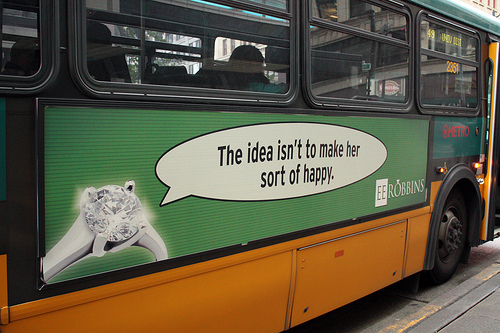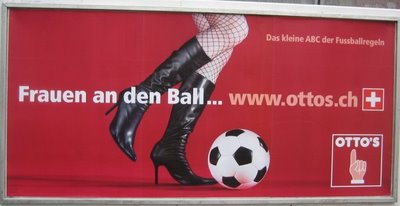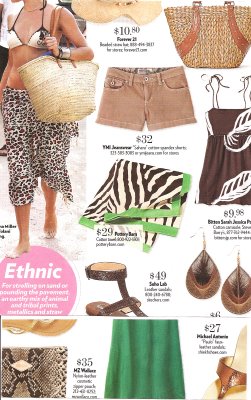Elizabeth A. at blogofstench sent us her post on this ad for “Disaboom, a site of news, networking and such for people with disabilities and their hangers-on.”

She notes how the site and the ad challenge the stereotype of disabled people as asexual but, much like Viktoria in Bizarre magazine, does so by conforming to normative standards of attractiveness. But I really liked her observations regarding the extent of his disability. She writes:
…not only is this guy the picture of modern white bourgeois hegemonic masculinity, but I can’t shake the feeling that he’s also passing as non-disabled. Tattoos aside, he looks like a non-disabled guy sitting down in a chair that just happens to have wheels. While some people indeed use wheelchairs with no back and no handlebars and a low-slung profile, other people with disabilities have much more obvious tools that they use; an electric wheelchair, for example, can have six wheels, headlights and tail lights, a control box with joystick and horn, storage pouches on either side, footrests, leg braces, head rest, reclining seat, adjustable cushions and posture support, a backpack on the back and an obvious computer on board, all of which are much more obvious than a discreet little set of wheels under your butt… I feel that the Disaboom ad downplays the unavoidable obviousness of some mobility aids in its attempt to make the guy in the picture seem more stereotypically “non-disabled.”
Not to mention, I might add, a disability that interferes with urination and defecation or one that caused involuntary body movements.






